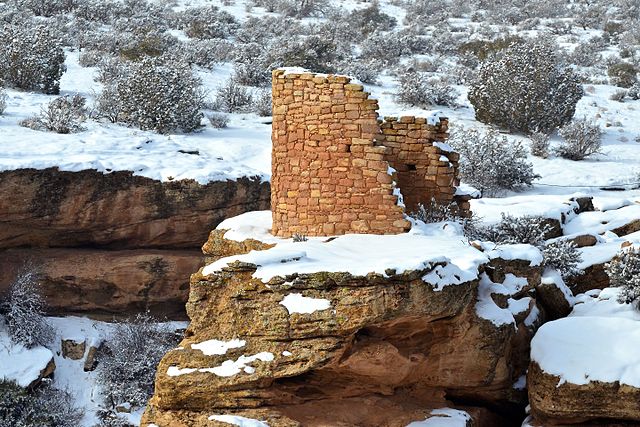Aztec Ruins National Monument
The Aztec Ruins National Monument in northwestern New Mexico, US, consists of preserved structures constructed by the Pueblo Indians. The national monument lies on the western bank of the Animas River in Aztec, New Mexico, about 12 miles (19 km) northeast of Farmington. Additional Puebloan structures can be found in Salmon Ruins and Heritage Park, 9.5 miles (15.3 km) south. Archaeological evidence puts the construction of the ruins in the 12th and 13th centuries. The Puebloan-built ruins were dubbed the "Aztec Ruins" by 19th century American settlers who misattributed their construction to the Aztecs.
Aztec Ruins National Monument
The restored Great Kiva at Aztec Ruins
Aztec West, with reconstructed great kiva (right)
The Ancestral Puebloans, also known as the Anasazi, were an ancient Native American culture that spanned the present-day Four Corners region of the United States, comprising southeastern Utah, northeastern Arizona, northwestern New Mexico, and southwestern Colorado. They are believed to have developed, at least in part, from the Oshara tradition, which developed from the Picosa culture. The people and their archaeological culture are often referred to as Anasazi, meaning "ancient enemies", as they were called by Navajo. Contemporary Puebloans object to the use of this term, with some viewing it as derogatory.
Cliff Palace in Mesa Verde National Park in Montezuma County, Colorado
White House Ruin Trail at the Canyon de Chelly National Monument in Apache County, Arizona
Horseshoe Tower in the snow at the Hovenweep National Monument
Pueblo Bonito, the largest of the Chacoan Great Houses, stands at the foot of Chaco Canyon's northern rim.







